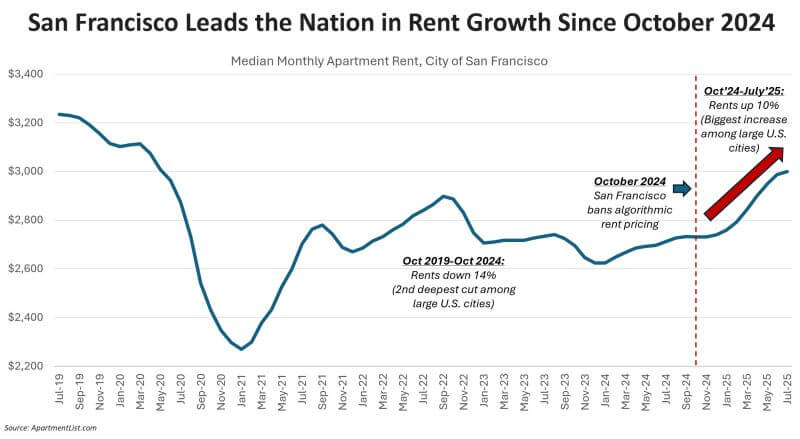Story Highlights
- A new federal Opportunity Zone program is expected to see fewer eligible zones nationwide.
- The Bay Area qualifies for 480 potential Opportunity Zones.
- Governors must identify targeted sites by July 1, 2026.
The second iteration of the federal tax-advantaged Opportunity Zone program is expected to have fewer zones than its predecessor — potentially sparking intense lobbying efforts to determine which census tracts qualify for the high-stakes designation.
In the Bay Area, a total of 480 census tracts appear to qualify under the new criteria outlined in the federal government's new tax and spending law, which made several changes to the Opportunity Zones program. For the counties within the San Francisco metro area, there are 346 potential opportunity zones, while to the south in Silicon Valley, 134 census tracts appear to qualify under the new criteria outlined in the federal government's new tax and spending law, which made several changes to the Opportunity Zones program.
Alameda County leads the pack with 105 potential Opportunity Zones. The next closest were San Francisco and Santa Clara counties, which each identify 88 such zones.
To determine the estimated number of local Opportunity Zones, an affiliate of the San Francisco Business Times analyzed the 2025 Census Bureau list of all tracts and applied the new eligibility rules to those tracts. The analysis included poverty rate data from the Census Bureau's American Community Survey.
Here in the Bay Area, the zones are spread across the region in every county. Here's the breakdown of how many zones exist in each county:
San Francisco regional census tracts:
San Francisco County – 88
San Mateo County – 34
Alameda County – 105
Contra Costa County – 66
Marin County – 12
Solano County — 22
Sonoma County — 13
Napa County — 6
Silicon Valley regional census tracts:
Santa Clara County – 88
Monterey County – 26
Santa Cruz County – 14
San Benito County – 6
Fewer Opportunity Zones expected in new version
In the original program, passed during President Donald Trump's first term as part of the Tax Cuts and Jobs Act of 2017, 42,176 census tracts were eligible to become designated Opportunity Zones.
Ultimately, governors in each state and territory picked 8,764 of those locations to receive the tax-advantaged investments made possible by the program, which by definition aimed to "spur economic growth and job creation in low-income communities while providing tax benefits to investors."
If governors were to then pick the maximum-allowed 25% of those sites to be Opportunity Zones, that would mean about 6,500 zones in the program — a nearly 26% drop from the number of available sites in the program's first iteration. That figure is in line with other estimates that have found the number of eligible Opportunity Zones could fall by more than 20% under the new law.
In the new version of the Opportunity Zone program, Congress narrowed the definition of "low-income community" to census tracts with a median household income that does not exceed 70% of an area's median income, down from an 80% threshold previously. A census tract also would be eligible if it has a poverty rate above 20%.
Congress also removed the ability of governors to nominate census tracts that would not otherwise be eligible but were allowed in the previous edition of the program because they were “contiguous” to an eligible tract. Eliminating those tracts in the program's new version shrinks the eligibility pool even further.
The federal government has not yet published an official list of eligible tracts under the new law. Governors have nearly a year — until July 1, 2026 — to identify their targeted tracts for the program. Lobbying efforts are anticipated in many states around the nation during the run-up to that deadline.
New rules expected to fuel fights
For Jacob Naig, a real estate agent, contractor and Opportunity Zone investor in Des Moines, Iowa, having fewer tracts means every mayor, chamber of commerce official and developers' coalition is going to have to fight harder to ensure their areas are included in the program.
“Look for polished census tract pitch decks, not only letters from governors’ offices," Naig said in an email. "In Iowa, I can already see Des Moines, Cedar Rapids, Davenport and who knows where else jockeying for a limited pool of urban tracts, while rural counties protest that they were forgotten last time and need a carve‑out.”
Naig said there also are upsides to fewer Opportunity Zones. The changes should ensure that capital can go to truly distressed regions and not so-called “tourist” areas as in the previous version of the program — places where no subsidy was truly needed to get developers to build.
He also thinks states will devise clearer, more-transparent scoring rubrics, such as highlighting jobs or vacancy rates, to protect Opportunity Zone nominations from political blowback. He anticipates cities and states will pile on additional benefits such as facade grants, expedited permitting or special taxation zones, as well.
“States will codify what was previously ad hoc, and locals will create packages of incentives to sweeten tracts that appear scary on paper,” Naig said.
Where Opportunity Zones could be located
Some states will have many more eligible census tracts than others, according to an analysis of the data. California tops all states in our estimate, with 2,738 census tracts that appear to be eligible, followed by Texas with 2,492 and New York with 1,649.
Vermont, on the other hand, has just 19 such census tracts, according to our estimate, followed by Wyoming with 29 and Arkansas with 30.
At a more-local level, the most-populous counties are at the top of the list for eligible number of census tracts, according to The Business Journals' analysis.
That means Los Angeles County, with 846 tracts that appear to be eligible, followed by Chicago's Cook County, with 528. Harris County (Houston) in Texas has 526 eligible tracts, followed by New York's Kings County (Brooklyn) and Wayne County (Detroit) in Michigan.
What will change for the program
The new Opportunity Zone program calls for governors to identify their targeted sites by July 1, 2026, and for the program to officially open for investment on Jan. 1, 2027.
That might seem like a lengthy timeline, but experts say business owners, landowners, investors and local-government officials should be taking action now — especially since the sun-up to designating new zones is likely to be a time of intense lobbying.
Blake Christian, CEO at builder MIT Modular and an Opportunity Zone expert, said lobbying during the first round of the Opportunity Zone program was not pronounced because people were less aware of the full scope of the program and its potential. Governors ended up picking tracts that were already developed or were poorly suited to attract investment.
Not this time, Christian said.
“Local lobbying has already begun, and with rural census tracts now more directly competing with urban areas, governors will be getting more public input than they may want,” Christian said.
The original Opportunity Zones program saw about $89 billion in qualifying equity investments across 5,600 census tracts through the end of 2022, according to a working paper by the Economic Innovation Group — with expectations those investments will eventually total more than $100 billion. The group additionally noted that Opportunity Zones ultimately were responsible for a net increase of 313,000 housing units over a five-year period.
Ahmed Whitt, director of the Center for Wealth Equity at Living Cities, said the new limitations on eligibility will likely discourage some real estate projects that contributed to the issues of gentrification and oversupply that plagued the program previously.
“We’ll see more-intense lobbying, especially for select urban neighborhoods,” Whitt said. “Still overall, the changes in 2.0 are likely to create a more-effective program by focusing on areas that truly need both investment and have growth potential.”




